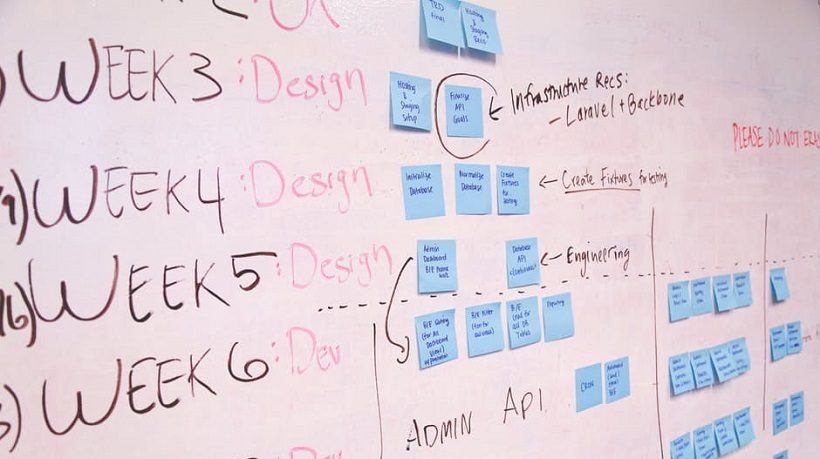Innovating Your L&D Strategy By Fostering Agility
Imagine a company where Learning and Development (L&D) design is swift, training materials are always up to date, and outdated content and formats are addressed before they negatively affect learning outcomes. This is not a science fiction scenario, but rather the reality for agile companies that proactively change ineffective practices and transform them into impactful learning experiences. Organizations that invest in fostering agility can teach their workforce how to quickly adapt to new circumstances, learning and unlearning as needed. As a result, they maintain a competitive edge by providing employees with the exact learning resources they need to achieve maximum productivity and efficiency. This article will discuss tips and best practices for fostering a culture of agility and continuous learning, ensuring your organization builds L&D strategies that evolve to remain relevant to industry requirements.
Best Practices To Foster A Culture Of Agility
Creating a culture of agility is what prevents learning "dead horses," or ineffective strategies, from becoming established. Let's see which best practices successful businesses follow to foster agility and encourage continuous learning and improvement.
1. Make Learning An Experience
To optimize your L&D strategy and make it more agile, you need to reframe how learning is perceived in your organization. The traditional approach often confines learning to a series of isolated events, such as workshops, modules, or certification courses, measuring success simply by tracking attendance. Modern learning, on the other hand, goes beyond predetermined events led by the L&D team. It takes place through interactions with peers, collaborative projects, and knowledge bases that employees can access to improve their performance. Moreover, its effectiveness is reflected in enhanced performance and adaptability. In a culture of agility, employees don't have to pause work to learn. On the contrary, learning is seamlessly integrated into their tasks, amplifying their work instead of disrupting it.
2. Train Leaders To Lead By Example
Agility is built from the top down, and specifically with the help of leaders and managers who demonstrate the behaviors they wish to see in employees. And what behaviors are those? Most importantly, leaders need to model curiosity and humility. Adopting a know-it-all attitude can undermine continuous learning and discourage employees from experimenting and stepping outside their comfort zone. On the contrary, a humble leader who openly seeks training opportunities to address their own knowledge gaps serves as a powerful example that learning is a sign of growth, evolution, and innovation. As a result, you could also measure leader participation in L&D initiatives to encourage employees to participate more actively.
3. Drive Learner Engagement With Personalization
A culture of agility and continuous learning is heavily dependent on learner engagement. When employees are truly invested in their development, they become more open to new ideas, more willing to put in extra effort, and ultimately more likely to achieve optimal learning results. One of the best ways to achieve high levels of engagement is to personalize each employee's learning path according to their preferences, strengths, and limitations. Learning Experience Platforms often facilitate this by providing access to learning materials in a variety of formats and allowing learners to create the perfect blend that matches their needs. Don't overlook the importance of providing continuous progress updates through dashboards, enabling employees to track their accomplishments and see how far they have come.
4. Normalize Unlearning And Experimentation
When you are trying to innovate your L&D strategy and foster agility, unlearning becomes just as important as learning. Ineffective strategies are often ingrained in the way your organization operates and in the way employees are trained. Therefore, before you ask them to learn something new, they need to unlearn old habits. This is where experimentation plays a key role. By normalizing the concept of trying new things, employees are less likely to get stuck on outdated practices. Of course, that also requires creating a safe space for employees to make mistakes and try again. This way, you will be able to try new learning methods and materials, gather employee feedback on what worked and what didn't, and ultimately make the best decisions for the effectiveness of your L&D strategy.
5. Encourage Collaboration And Knowledge Sharing
To promote agility, it is essential for organizations to have a knowledge-sharing system in place. When knowledge flows freely across departments, employees, and hierarchies, learning becomes a seamless process. Everyone can contribute to and benefit from a rich database of collective insights and intelligence, making it easier to find the right answers when issues arise. Collaboration is also crucial in this process, which can be enhanced through discussion boards, internal projects, and collaborative platforms that connect employees from various departments and locations. By implementing these techniques and tools, organizations can break down knowledge silos and encourage a mentality of sharing and exchanging information and insights instead of everyone keeping it to themselves.
6. Leverage Employee Feedback
While most organizations are well aware of the importance of communicating with and listening to their employees, they often fail to do so frequently enough to make a meaningful impact on their operations. But how can you possibly build a culture of agility if it takes weeks to gather employee insights on urgent issues? Instead of relying on annual employee feedback surveys, establish a regular communication system that allows employees to share their opinions quickly and directly. Once you collect feedback, don't forget to review it and extract insights to drive effective changes. When employees see that their opinions matter and are considered for L&D initiatives, they become more invested in the learning process.
7. Implement A Test-And-Learn Approach
The final step to building a culture of agility that will lead your business to success is to adopt a test-and-learn approach. In this iterative process, organizations select a specific element of their L&D strategy that they want to improve and test it on small groups. Once they gather some insights, they make adjustments and retest until they achieve the desired results. This approach enables organizations to implement small changes that can be gradually scaled up to larger audiences. As a result, they reduce the risks associated with large-scale rollouts, which can overwhelm employees and disrupt their work. Embracing this process encourages experimentation and open-mindedness across the organization, paving the way for innovation.
Conclusion
Creating a culture of agility is crucial to promoting continuous learning and innovation within your organization. To achieve this, it's important to reframe the way you view learning and place greater emphasis on employee feedback so that you can collect valuable insights. Moreover, don't underestimate the role of leadership, as agility and innovation are driven from the top. Finally, normalize experimentation and iteratively test new features and tools for your L&D strategy to curate the best mix for your organizational objectives and learning needs. This way, you will be able to quickly adapt to industry developments, as testing and implementing changes will be a natural and easy process for everyone.









